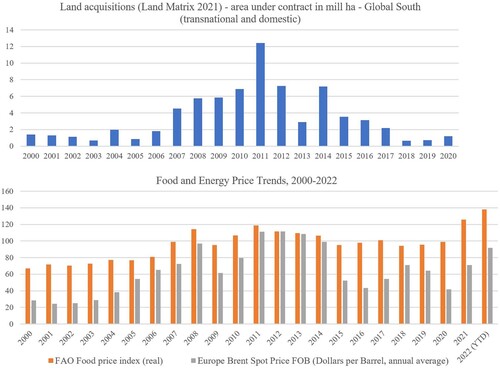Figures & data
Figure 1. Google scholar results (‘political ecology’ AND ‘ … ’). Data: Google scholar (29 July 2021).
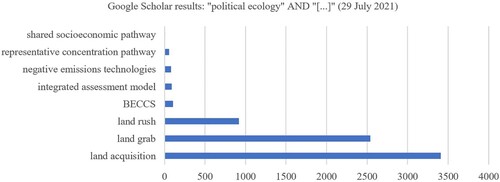
Figure 2. Rural population across global south and global north according to different population projections. 1960–2018 historical data (FAO). 2060–2100 projection (IIASA). SSP5 data not included, given a strong similarity with SSP1. SSP2 data not included, as it is identical with LED. SSP1 is based on IMAGE model, LED is based on MESSAGEix-GLOBIOM model.
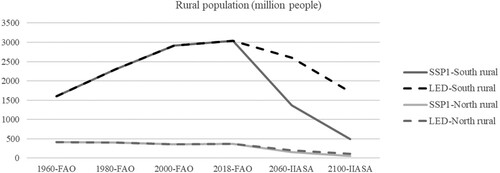
Table 1. Future population and urbanization dynamics and underlying assumptions. (Based on Jiang and O’Neill Citation2017; Riahi et al. Citation2017; Grubler et al. Citation2018). Data for urbanization rate: Jiang and O’Neill Citation2017. Population data: FAO-historical, IIASA-projected.
Figure 3. World land use/cover change (in millions of hectares in 2100, relative to 2010 reference levels) in key emissions reduction pathways under baseline (no additional mitigation policies) and mitigation policy conditions for limiting global warming to 1.5 °C above pre-industrial averages (RCP1.9). Data: © IAMC 1.5 °C scenario explorer hosted by IIASA https://data.ene.iiasa.ac.at/iamc-1.5c-explorer (see Huppmann et al. Citation2018).
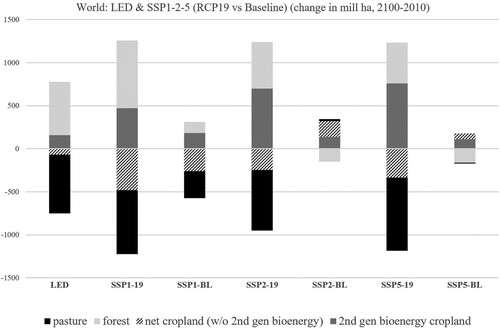
Figure 4. World land use/cover change in absolute (left panel) and relative terms (right panel), in key emissions reduction pathways for limiting global warming to 1.5 °C above pre-industrial averages. Each SSP archetype represents averaged outputs across all available IAMs. LED archetype is based on a single IAM model. Data: © IAMC 1.5 °C scenario explorer hosted by IIASA https://data.ene.iiasa.ac.at/iamc-1.5c-explorer (see Huppmann et al. Citation2018).
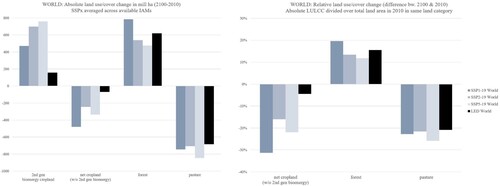
Figure 5. Global north vs Global south - absolute (left panel) and relative (right panel) land use/cover change, in key emissions reduction pathways for limiting global warming to 1.5 °C above pre-industrial averages. Data: © IAMC 1.5 °C scenario explorer hosted by IIASA https://data.ene.iiasa.ac.at/iamc-1.5c-explorer (see Huppmann et al. Citation2018).
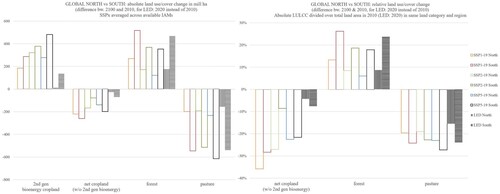
Figure 6. Global south - regional land use/cover change in absolute (left panel) and relative terms (right panel) in key emissions reduction pathways for limiting global warming to 1.5 °C above pre-industrial averages. MAF: Middle East & Africa; LAM: Latin America; ASIA: most Asian countries with exception of Middle East, Japan and former Soviet Union states. Data: © IAMC 1.5 °C scenario explorer hosted by IIASA https://data.ene.iiasa.ac.at/iamc-1.5c-explorer (see Huppmann et al. Citation2018).
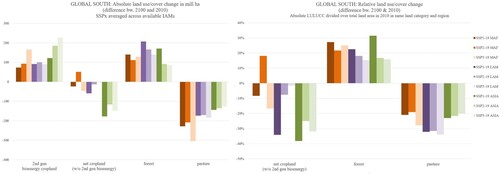
Figure 7. Historical and future land use/cover, globally (in different shades of blue). Historical land use/cover in Global South (black) and Global North (grey). Historical data (1961–2000) from FAO, future data (2010–2100) from IIASA.
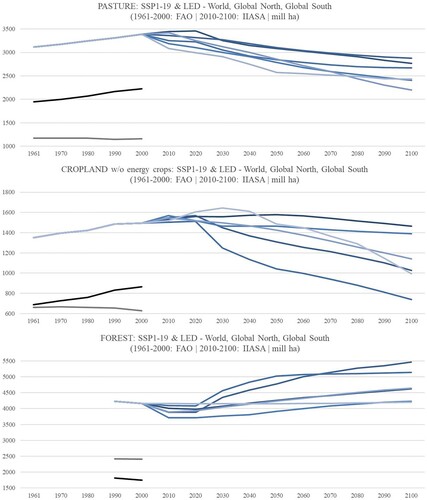
Figure 8. Rate of mean annual net LULCC: Future (LED and SSPx archetypes) and historic (FAO 1961-2000). SSPx = averaged across SSP1, 2, and 5. Data: IIASA/Huppmann et al. (Citation2018), FAO.
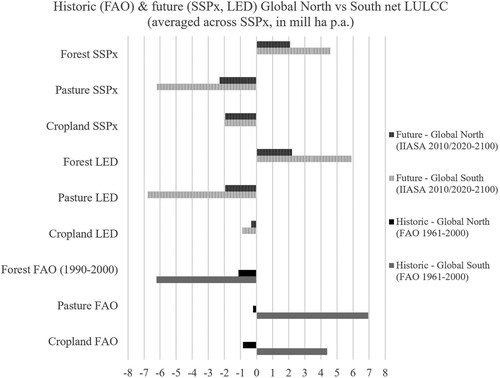
Figure 9. Global North vs Global South - historic and future land availability per rural person (top panel: Cropland, bottom panel: Pasture).
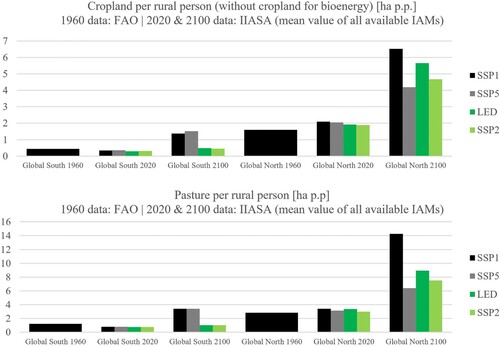
Figure 10. Land acquisitions per year, Global South, 2000–2020 (top panel) and FAO food price index and europe brent spot price (annual average, 2000–2022) (bottom panel). Data: Land Matrix Database, FAO and US EIA (2022).
